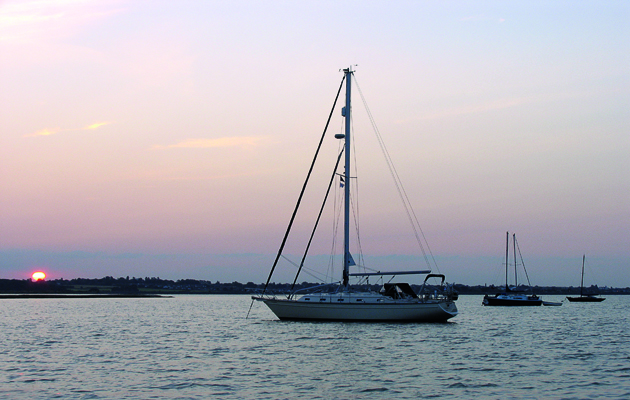The Pyefleet is one of the classic East Coast anchorages, and for good reasons, as Colin Jarman explains
Mention the River Colne, in Essex, and two names will pop up: Brightlingsea and the Pyefleet. The entrance to Brightlingsea Creek and the port of Brightlingsea (where there are shops and fuel) lies on the eastern shore of the Colne, almost directly opposite the entrance to Pyefleet Creek or the Pyefleet, as it is usually called. It’s one of the places that wins a special place in the hearts of almost all East Coast sailors.
The creek runs westward from the Colne, separating Mersea Island from the mainland, and offers good, safe holding once you’ve set the anchor. The only warning is that it can become quite rough in strong wind against tide conditions.
For many years the Pyefleet was a clear anchorage, but now there are a lot of moorings owned by the Colchester Oyster Fishery. Some of these are white buoys with a ‘Visitor’ tag pointing out that you may be charged £10 for the privilege of a night’s stay. Anchoring avoids any charge.
The Pyefleet is easily approached from seaward by first avoiding the Gunfleet wind farm, then finding the Knoll north cardinal buoy. From there, make for the Eagle starboard hand buoy (SHB) and the Colne Bar SHB before turning north to pass between the Colne Point SHB and the Inner Bench Head port hand buoy (PHB).
‘Once you’ve picked your spot, you can drop anchor in soft, glutinous mud’
This pair marks the start of the deep water channel up the Colne. Follow the channel to pass between buoys Numbers 13 and 10, just south of East Mersea Stone, the shingle headland on the eastern tip of Mersea Island. Ahead to starboard you will sight the Brightlingsea Spit south cardinal buoy, while to port there is a red, unlabelled PHB, which is on the south side of the entrance to Pyefleet Creek, and the red No12 PHB, which is on the north side. Enter between these two.
A barge or two are often anchored in the mouth of the creek, plus some bawleys on moorings. These give an idea of where the deep water channel runs as you turn westward into the creek. There is space to anchor before you reach the moorings, alternatively you may find an empty mooring to use or you can make your way through the moorings to anchor further up the creek. Be aware, however, that the creek shallows quite quickly the further in you go, and you must do the maths to make sure you will lie afloat at Low Water.
Once you’ve picked your spot, you can drop anchor in soft, glutinous mud. Set the anchor carefully, but once it’s in you won’t move. Now settle back and enjoy a sunset over the glistening mudbanks where waders potter and curlews call. Fabulous!





